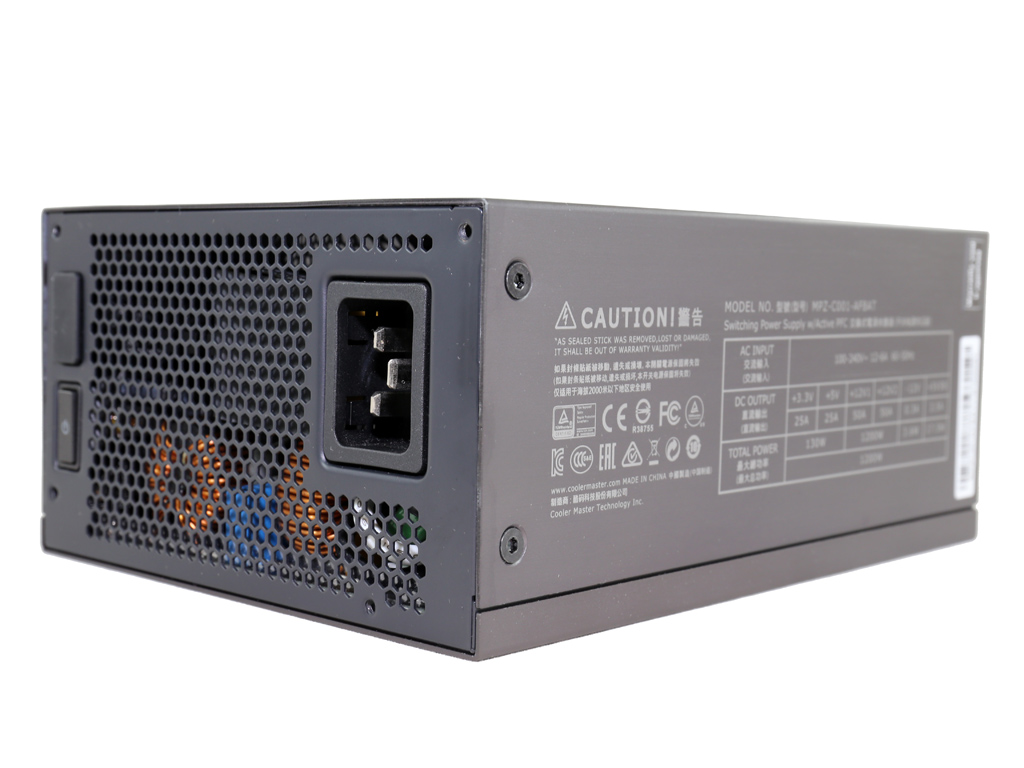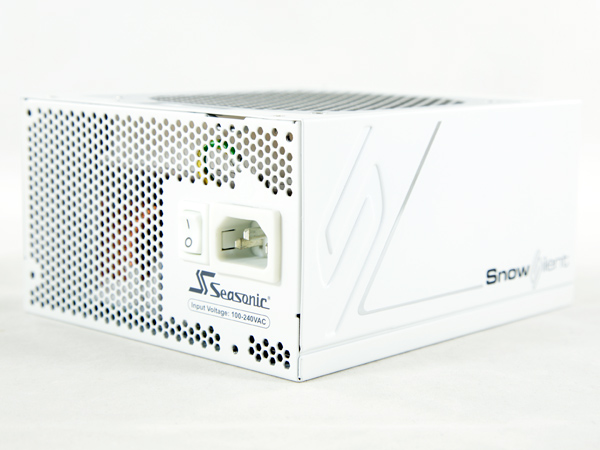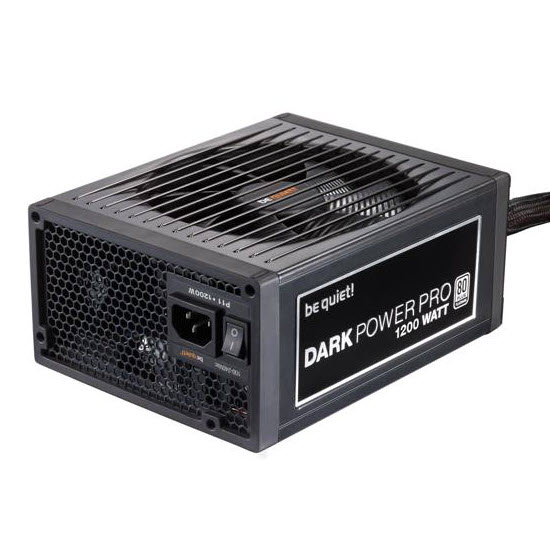Cooler Master MasterWatt Maker 1200 PSU Review
Cooler Master finally released its MasterWatt Maker PSU, which was designed for true enthusiasts. Sporting Titanium-class efficiency, a digital interface, and other exotic features, we didn't expect an affordable price. But $450 looks insane!
Why you can trust Tom's Hardware
Load Regulation, Hold-Up Time And Inrush Current And Protections
To learn more about our PSU tests and methodology, please check out How We Test Power Supply Units.
Primary Rails And 5VSB Load Regulation
Load Regulation testing is detailed here.
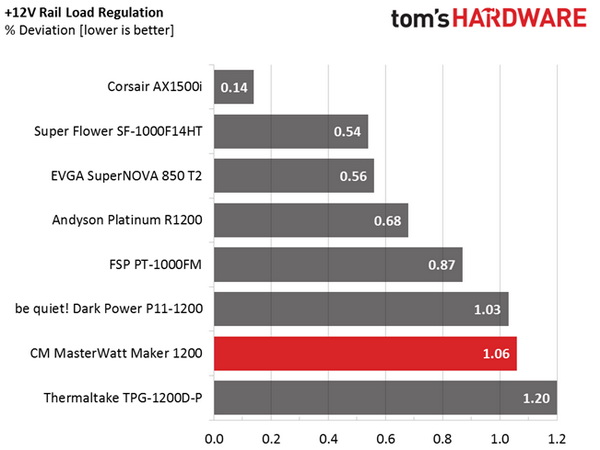
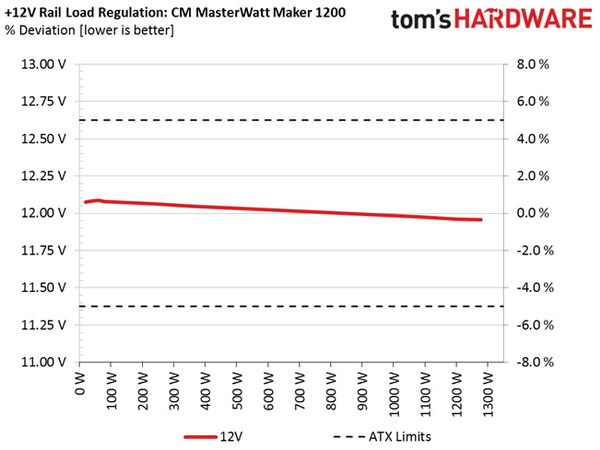
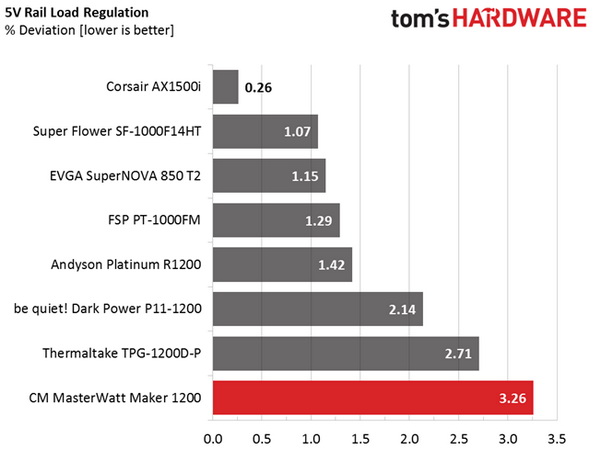
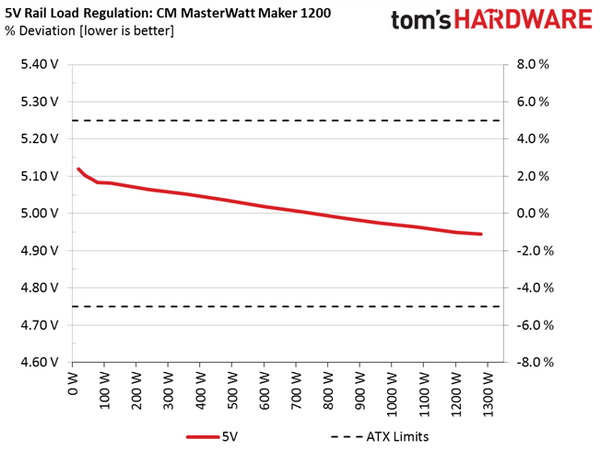
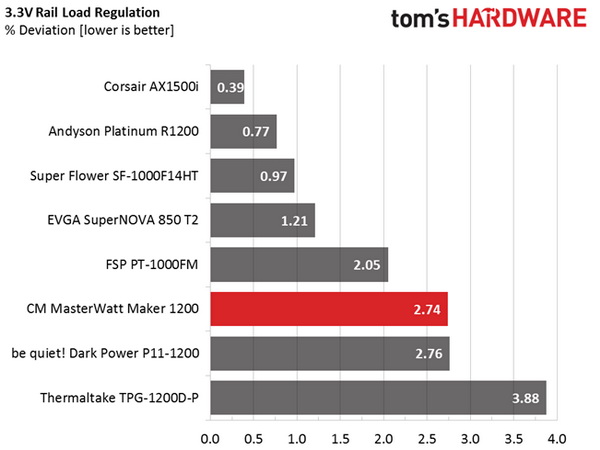
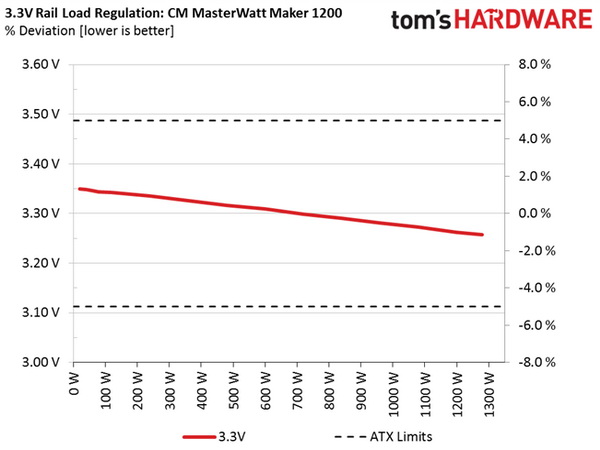
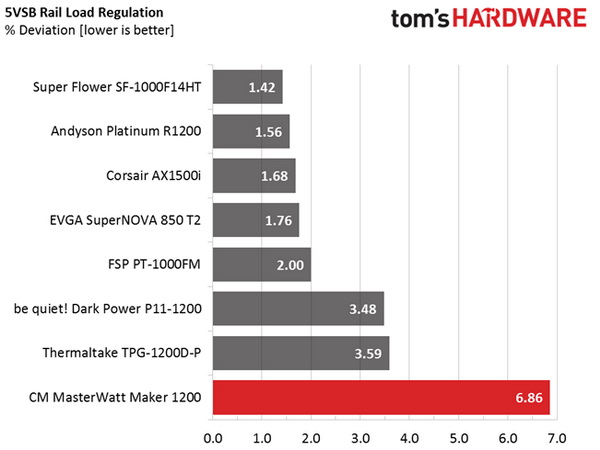
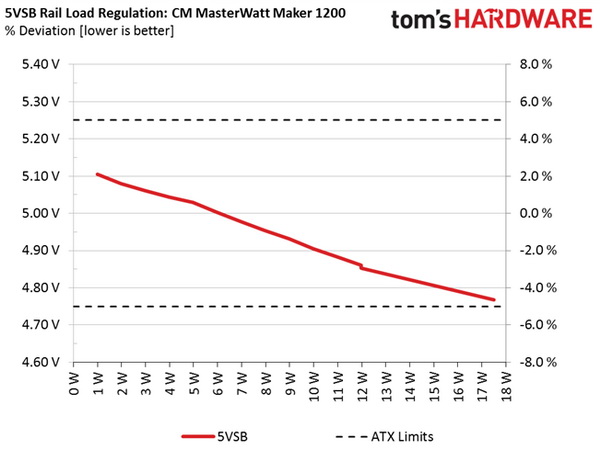
Hold-Up Time
Our hold-up time tests are described in detail here.
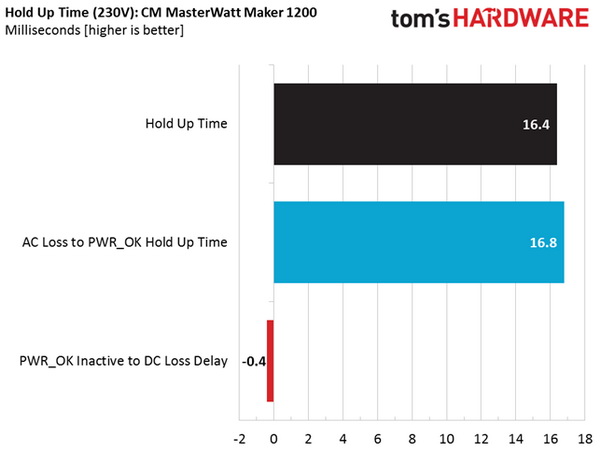
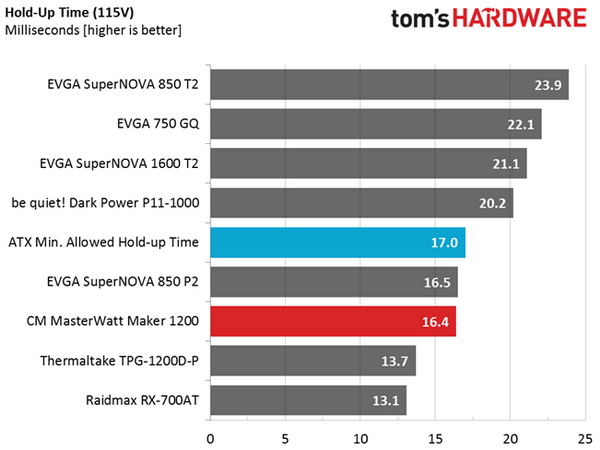
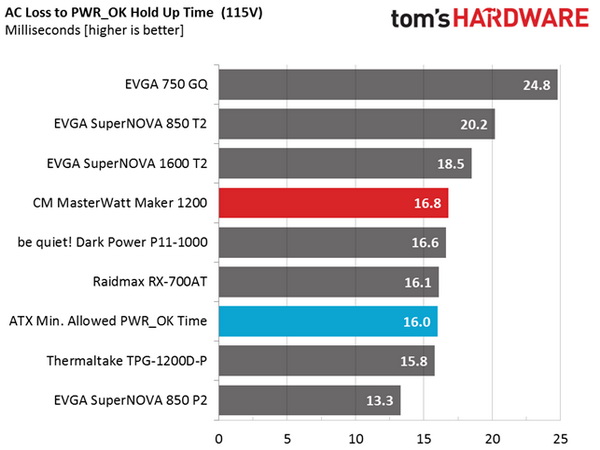
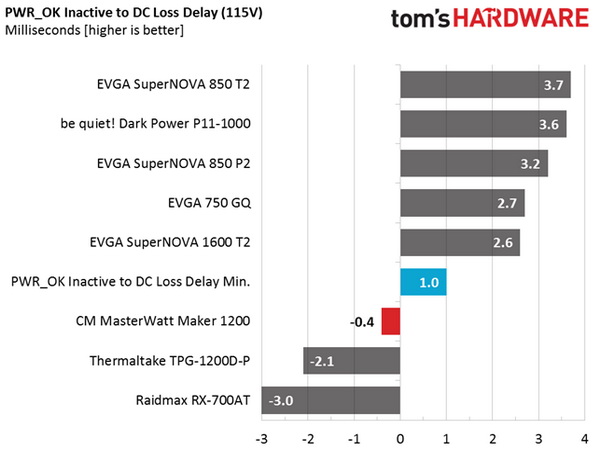
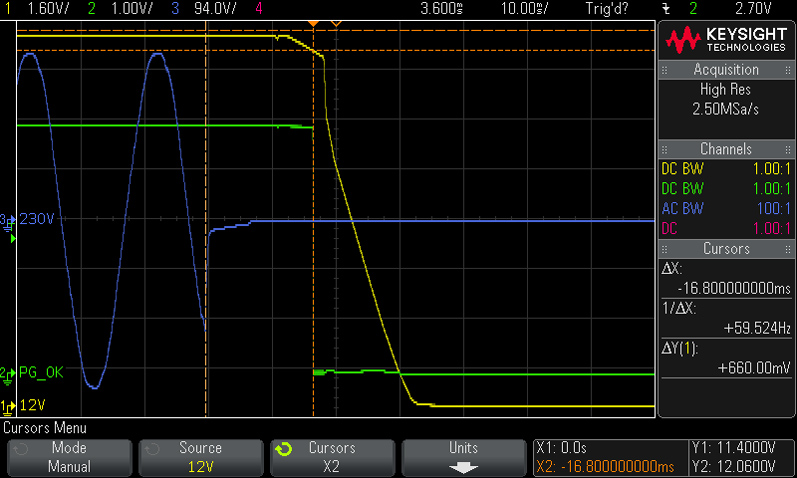
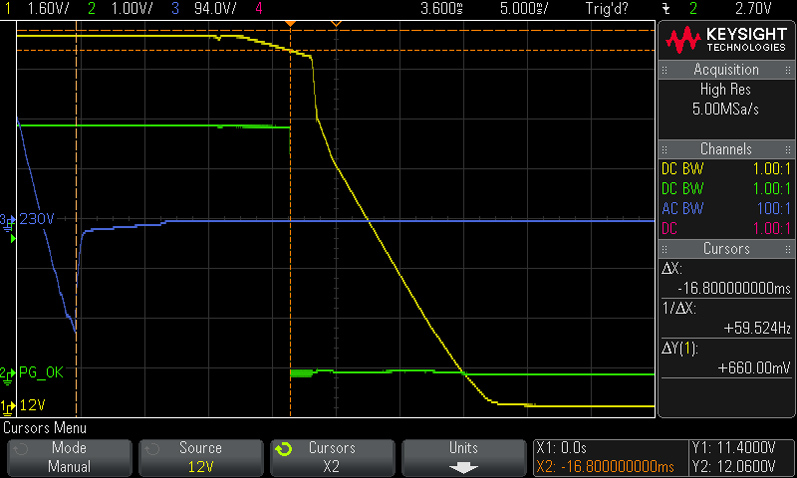
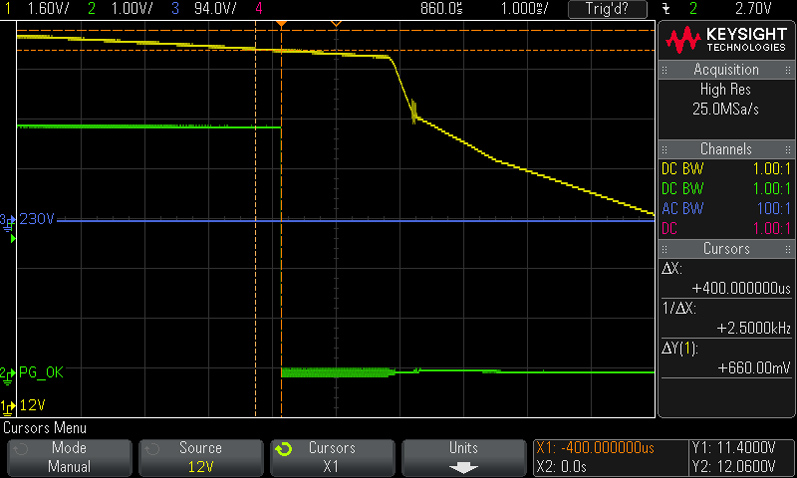
Cooler Master's hold-up time is a little lower than the required minimum. But that's not even the main problem. We're more concerned that the power-good signal lasts longer than the hold-up time. Normally, power-good should drop at least 1ms before the rails go out of spec.
Inrush Current
For details on our inrush current testing, please click here.
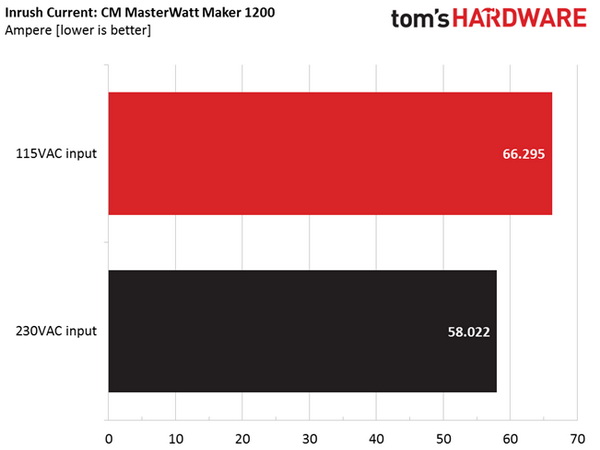
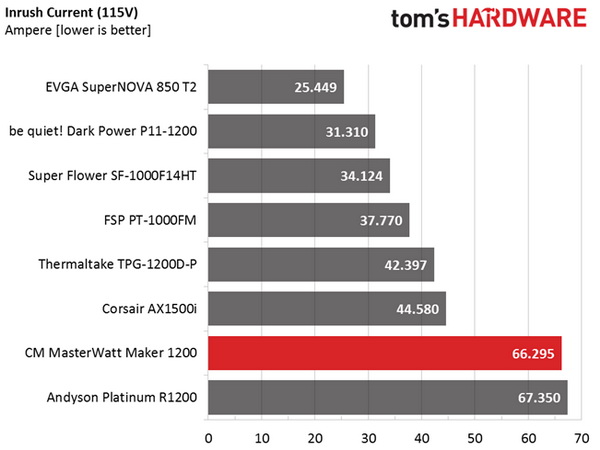
Despite the pair of NTC thermistors that this PSU uses, the bulk caps draw lots of current during its start-up phase.
Load Regulation And Efficiency Measurements
The first set of tests reveals the stability of the voltage rails and the PSU's efficiency. The applied load equals (approximately) 10 to 110 percent of the maximum load the supply can handle, in increments of 10 percentage points.
Get Tom's Hardware's best news and in-depth reviews, straight to your inbox.
We conducted two additional tests. During the first, we stressed the two minor rails (5V and 3.3V) with a high load, while the load at +12V was only 0.1A. This test reveals whether a PSU is Haswell-ready or not. In the second test, we determined the maximum load the +12V rail could handle with minimal load on the minor rails.
| Test # | 12V | 5V | 3.3V | 5VSB | DC/AC (Watts) | Efficiency | Fan Speed | Fan Noise | Temps (In/Out) | PF/AC Volts |
|---|---|---|---|---|---|---|---|---|---|---|
| 1 | 8.128A | 1.964A | 1.973A | 0.990A | 119.70 | 89.94% | 1680 RPM | 39.6 dB(A) | 39.77 °C | 0.947 |
| 12.075V | 5.081V | 3.342V | 5.029V | 133.09 | 43.80 °C | 115.1V | ||||
| 2 | 17.305A | 2.959A | 2.964A | 1.195A | 239.58 | 93.21% | 1680 RPM | 39.6 dB(A) | 41.04 °C | 0.971 |
| 12.062V | 5.064V | 3.335V | 5.002V | 257.04 | 45.36 °C | 115.1V | ||||
| 3 | 26.864A | 3.466A | 3.485A | 1.404A | 359.77 | 93.52% | 1680 RPM | 39.6 dB(A) | 41.30 °C | 0.982 |
| 12.049V | 5.051V | 3.326V | 4.978V | 384.68 | 45.82 °C | 115.1V | ||||
| 4 | 36.428A | 3.969A | 3.977A | 1.610A | 479.60 | 93.49% | 1680 RPM | 39.6 dB(A) | 41.16 °C | 0.985 |
| 12.036V | 5.036V | 3.316V | 4.954V | 513.01 | 45.94 °C | 115.1V | ||||
| 5 | 45.665A | 4.979A | 4.985A | 1.823A | 599.50 | 93.12% | 1680 RPM | 39.6 dB(A) | 41.66 °C | 0.988 |
| 12.023V | 5.018V | 3.309V | 4.931V | 643.80 | 47.02 °C | 115.1V | ||||
| 6 | 54.914A | 5.994A | 6.000A | 2.034A | 719.45 | 92.21% | 1680 RPM | 39.6 dB(A) | 42.51 °C | 0.991 |
| 12.013V | 5.004V | 3.299V | 4.905V | 780.26 | 49.12 °C | 115.1V | ||||
| 7 | 64.174A | 7.015A | 7.018A | 2.251A | 839.29 | 91.73% | 2190 RPM | 40.2 dB(A) | 43.81 °C | 0.992 |
| 12.002V | 4.988V | 3.290V | 4.883V | 914.92 | 50.72 °C | 115.1V | ||||
| 8 | 73.464A | 8.044A | 8.045A | 2.465A | 959.23 | 91.15% | 2730 RPM | 44.9 dB(A) | 44.47 °C | 0.994 |
| 11.990V | 4.975V | 3.281V | 4.861V | 1052.39 | 52.68 °C | 115.1V | ||||
| 9 | 83.221A | 8.561A | 8.584A | 2.470A | 1079.22 | 90.53% | 2730 RPM | 44.9 dB(A) | 46.55 °C | 0.994 |
| 11.976V | 4.963V | 3.273V | 4.852V | 1192.17 | 56.23 °C | 115.1V | ||||
| 10 | 92.545A | 9.091A | 9.103A | 3.669A | 1199.11 | 89.83% | 2730 RPM | 44.9 dB(A) | 46.75 °C | 0.995 |
| 11.961V | 4.949V | 3.262V | 4.767V | 1334.92 | 57.24 °C | 115.1V | ||||
| 11 | 99.281A | 9.100A | 9.117A | 3.675A | 1279.08 | 89.50% | 2730 RPM | 44.9 dB(A) | 47.20 °C | 0.996 |
| 11.955V | 4.944V | 3.257V | 4.759V | 1429.13 | 59.86 °C | 115.1V | ||||
| CL1 | 0.103A | 16.024A | 16.004A | 0.000A | 134.74 | 85.32% | 2100 RPM | 40.1 dB(A) | 44.50 °C | 0.955 |
| 12.080V | 5.003V | 3.332V | 5.068V | 157.93 | 51.10 °C | 115.1V | ||||
| CL2 | 99.936A | 1.003A | 1.003A | 1.001A | 1208.83 | 90.25% | 2730 RPM | 44.9 dB(A) | 46.90 °C | 0.995 |
| 11.963V | 5.024V | 3.276V | 4.970V | 1339.49 | 55.76 °C | 115.1V |
Load regulation at +12V is good enough, though nowhere close to the AX1500i's performance. Regulation is merely average on the minor rails, and bad at 5VSB. In addition, the fan spins fast during these tests, keeping the noise output at notable levels. Fortunately, you can adjust that by using the Silent profile or creating a custom curve. We stuck with Cooler Master's default profile throughout our benchmarks.
We didn't manage to achieve 110% during our overload test because the PSU shut down immediately, likely due to the involvement of over-power protection. We had to lower the applied load to around 107% to generate a result.
The MasterWatt Maker 1200 almost reaches 90% efficiency in the 10% load test, and it easily clears the 92% requirement in our 20% load test. With 50% load, efficiency is above 93%. And given a very high ambient temperature, we can give it a pass since it's within 1% of the target requirement. At full load, we measure close to 90% efficiency. This is indeed a Titanium-class power supply.
Cooler Master Connect Screenshots
You will find several screenshots of the Connect software below, which we took during our test sessions.
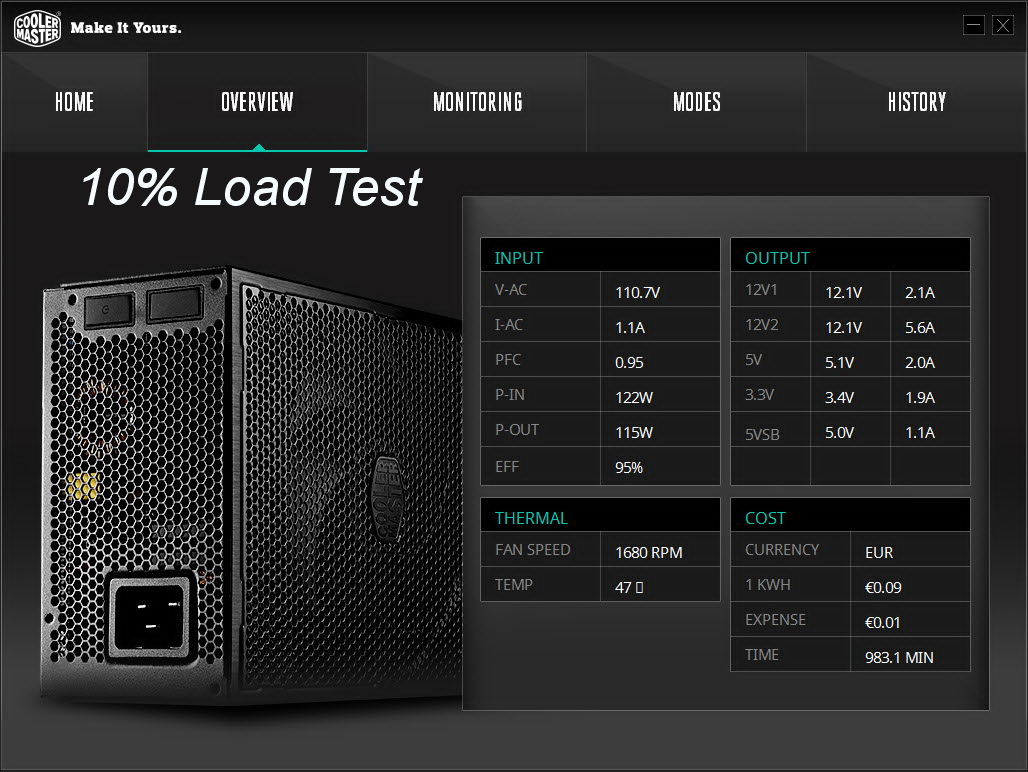
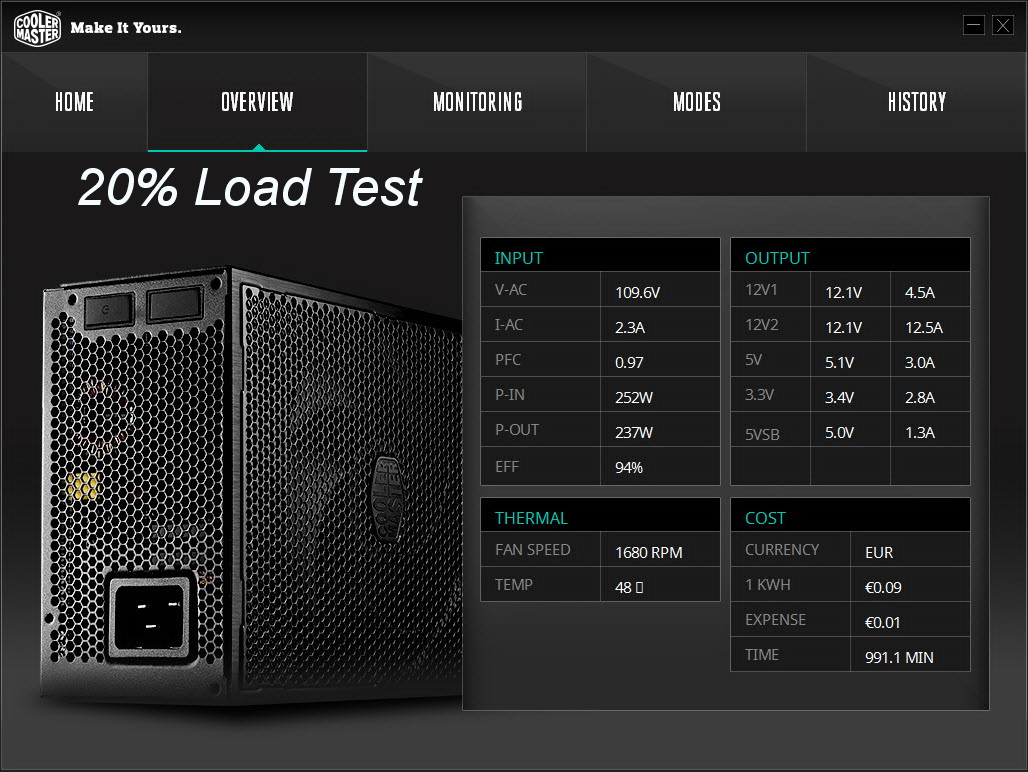
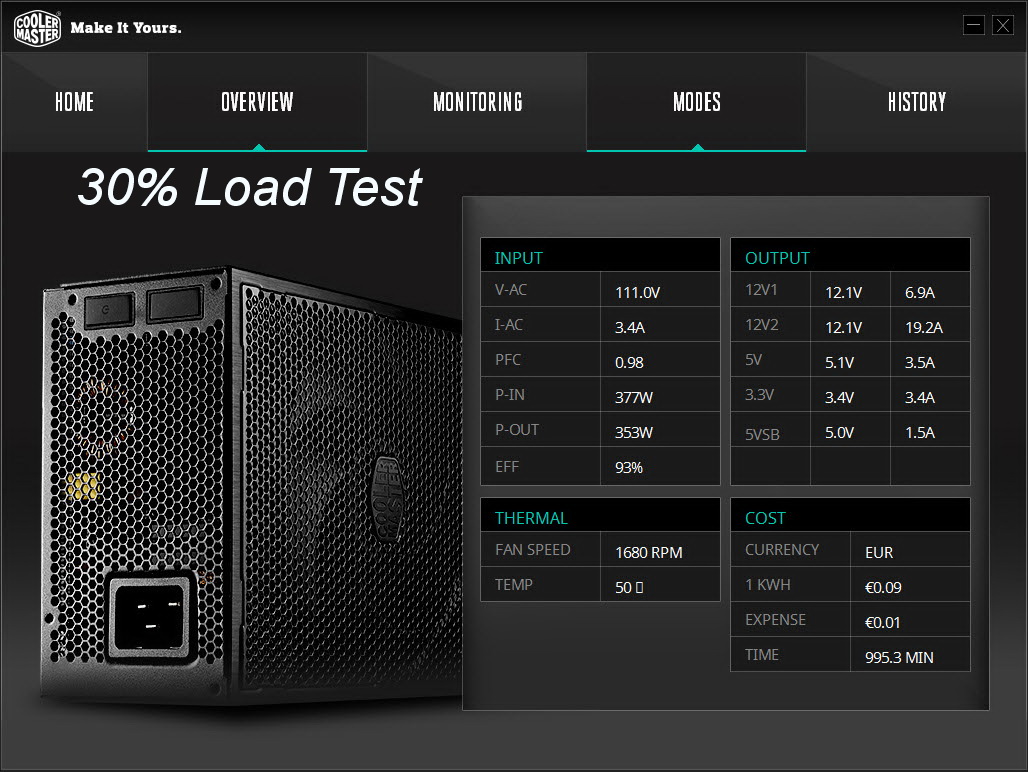
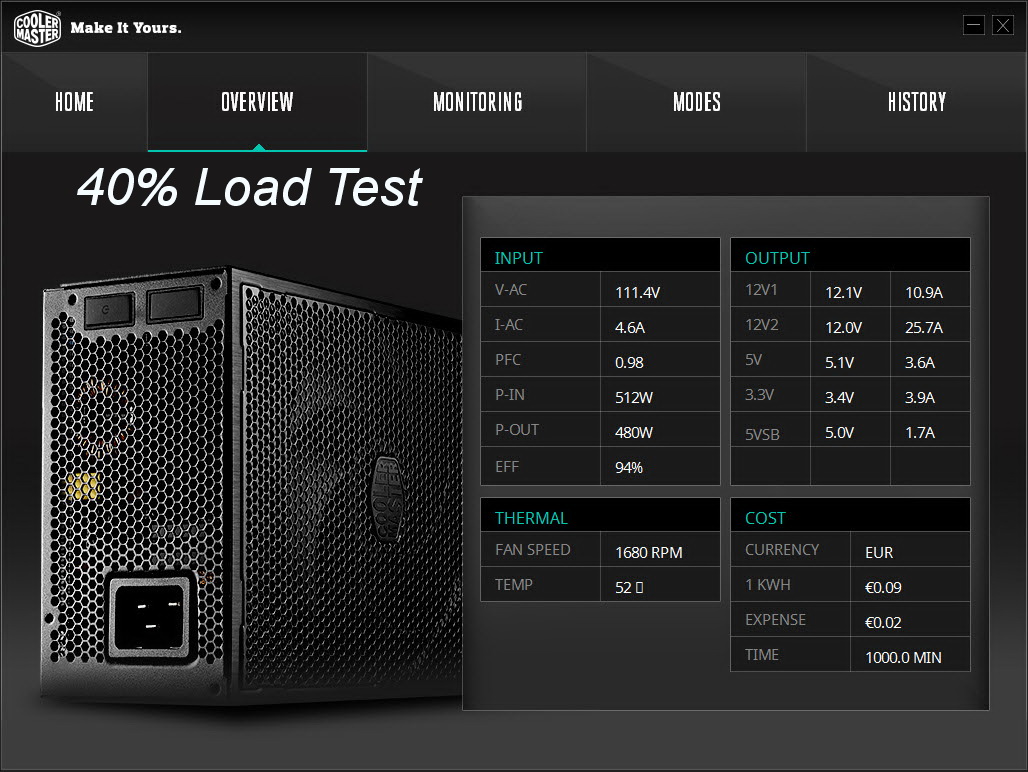
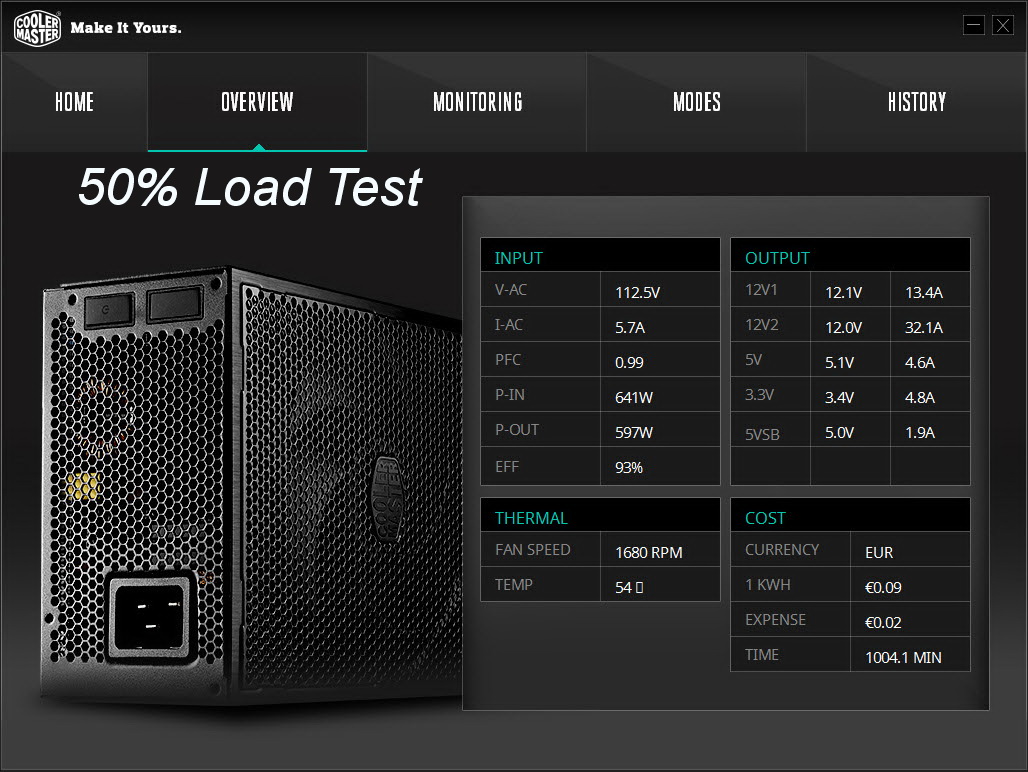
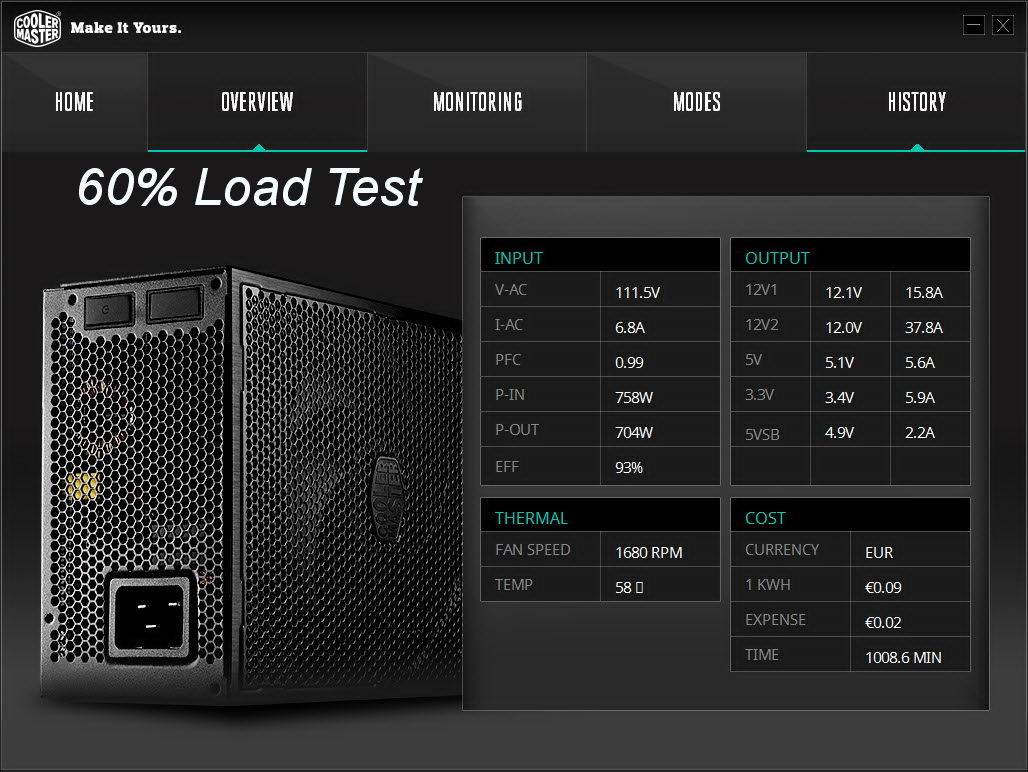
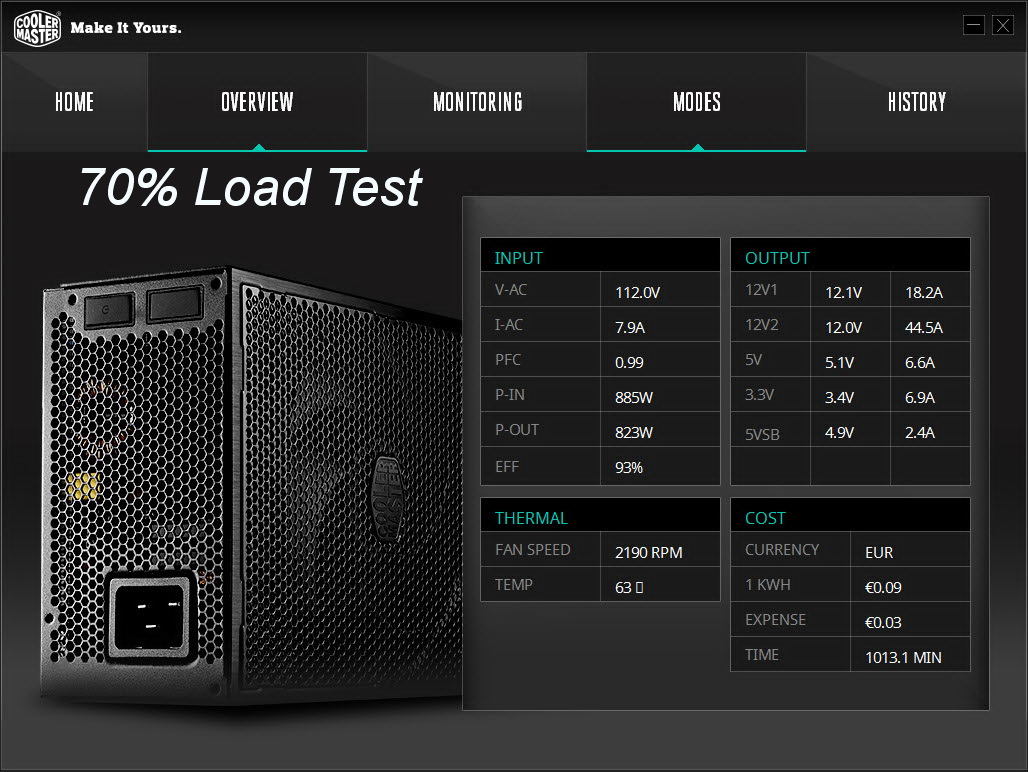
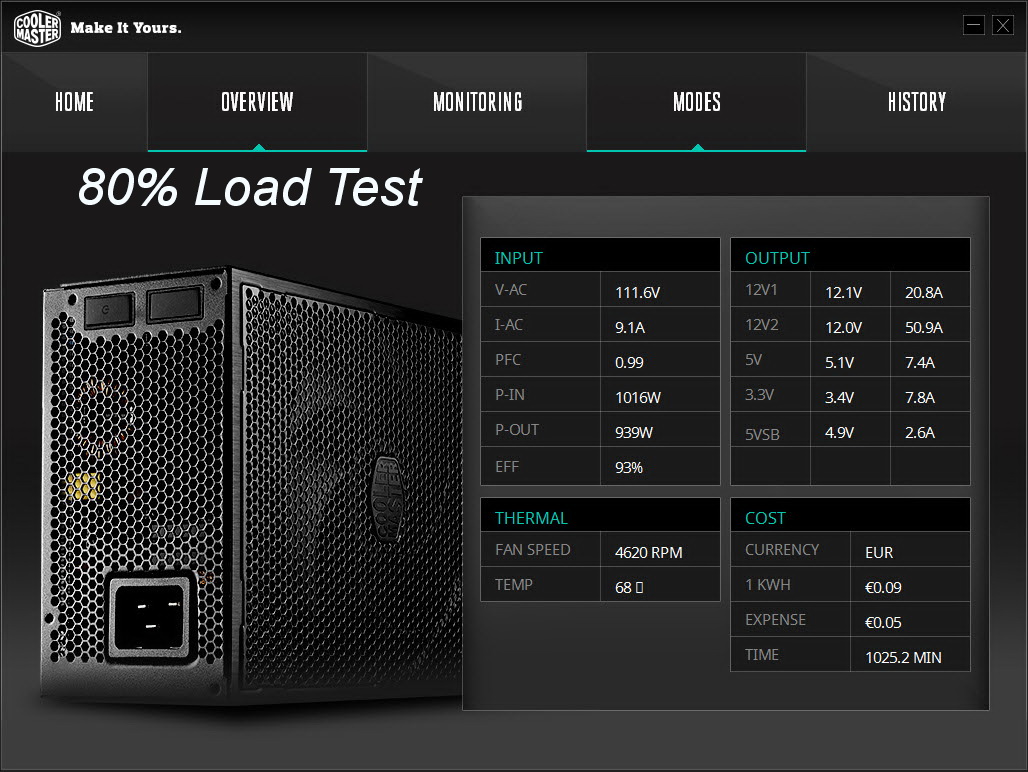
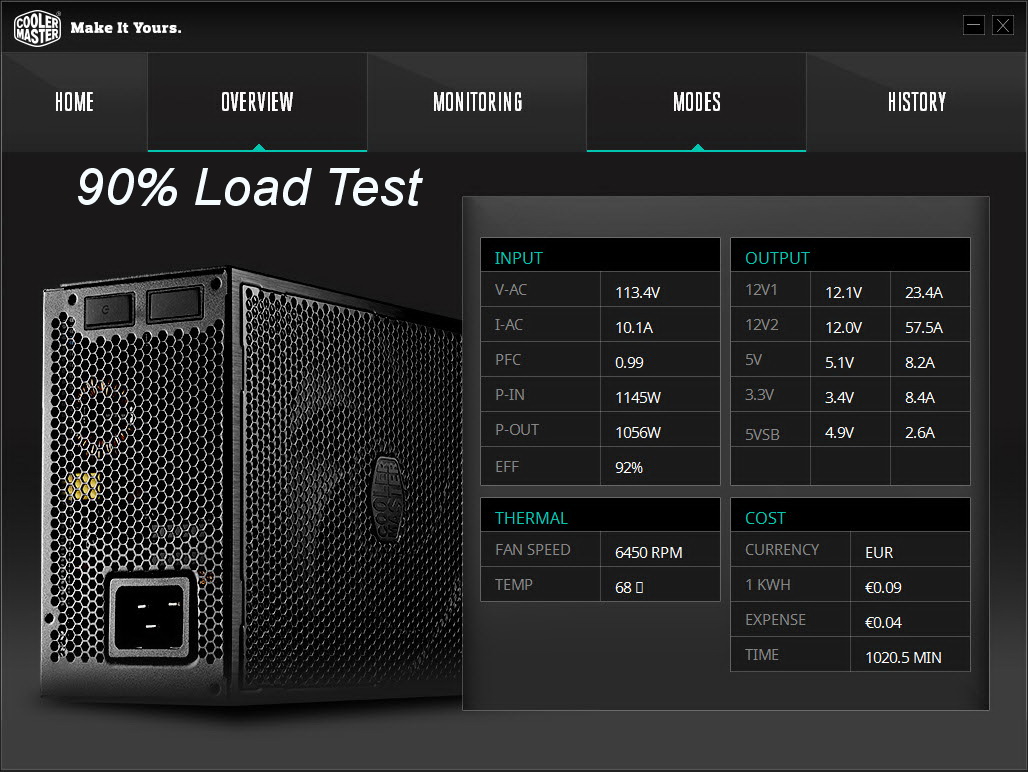
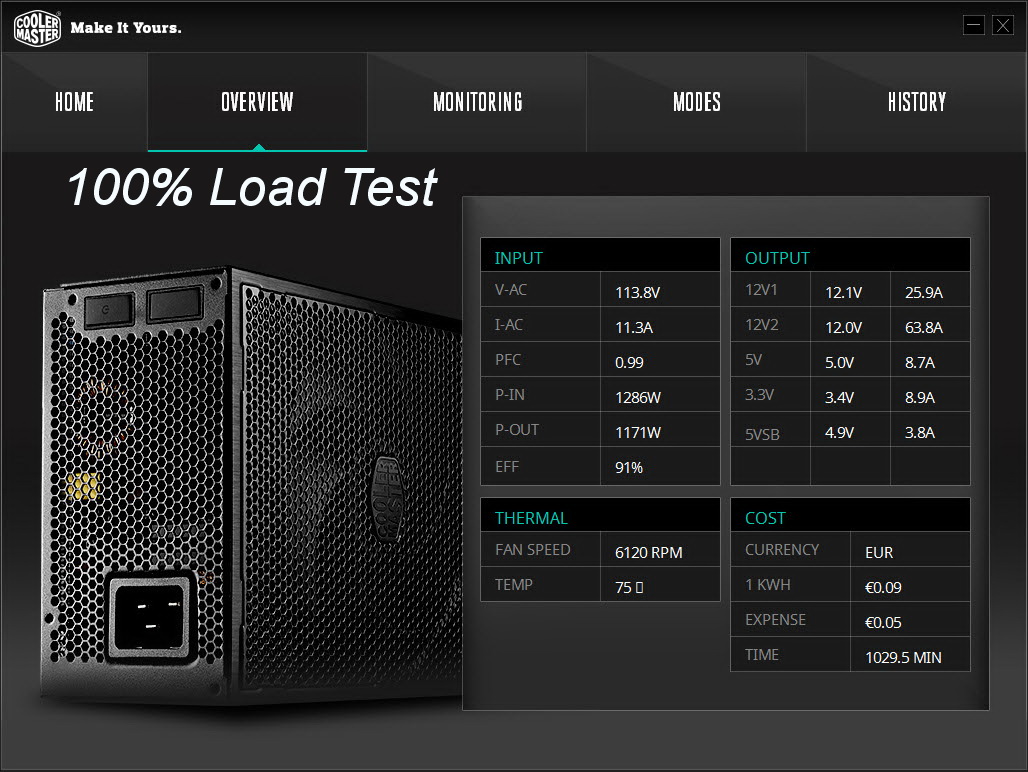
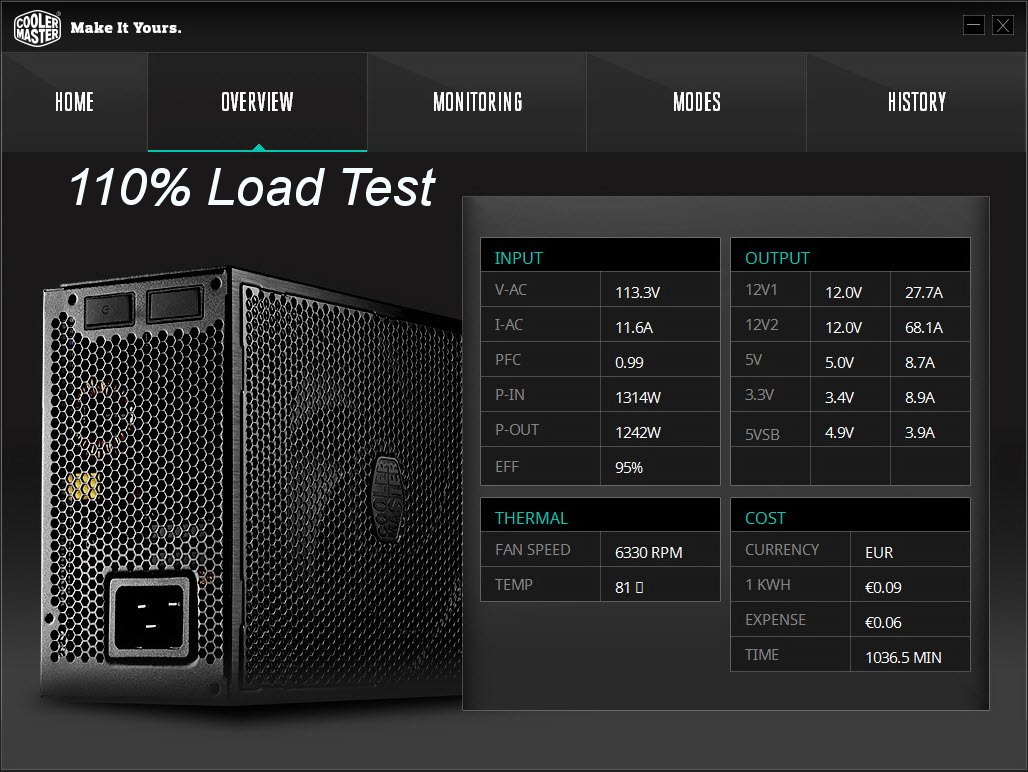
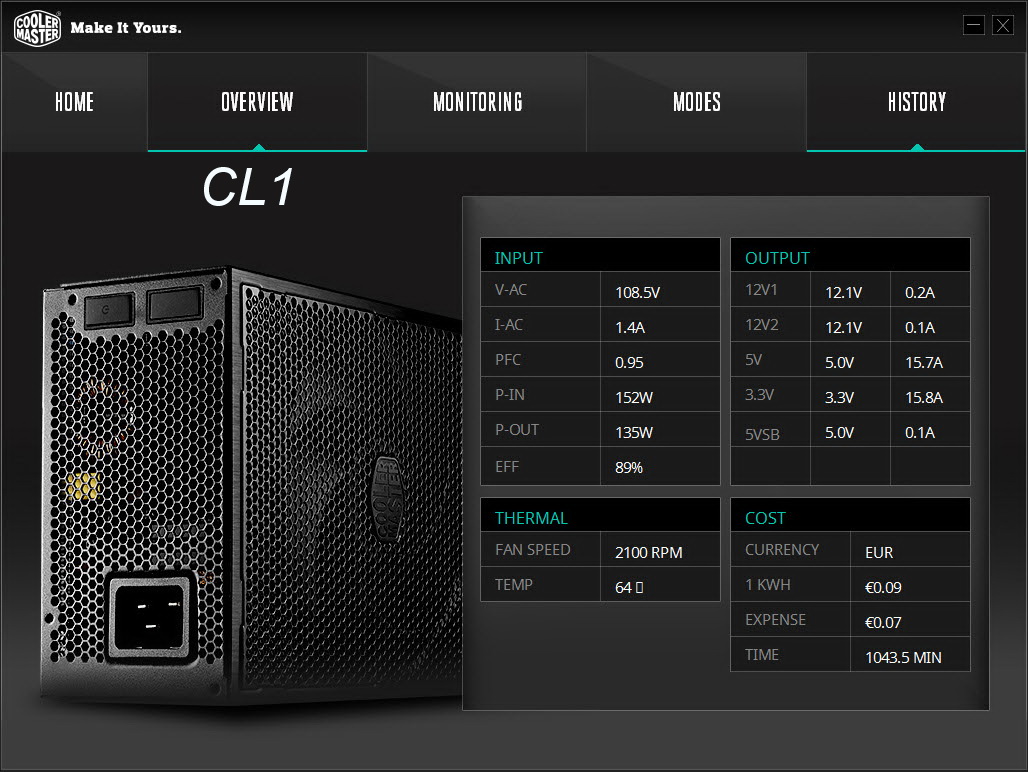
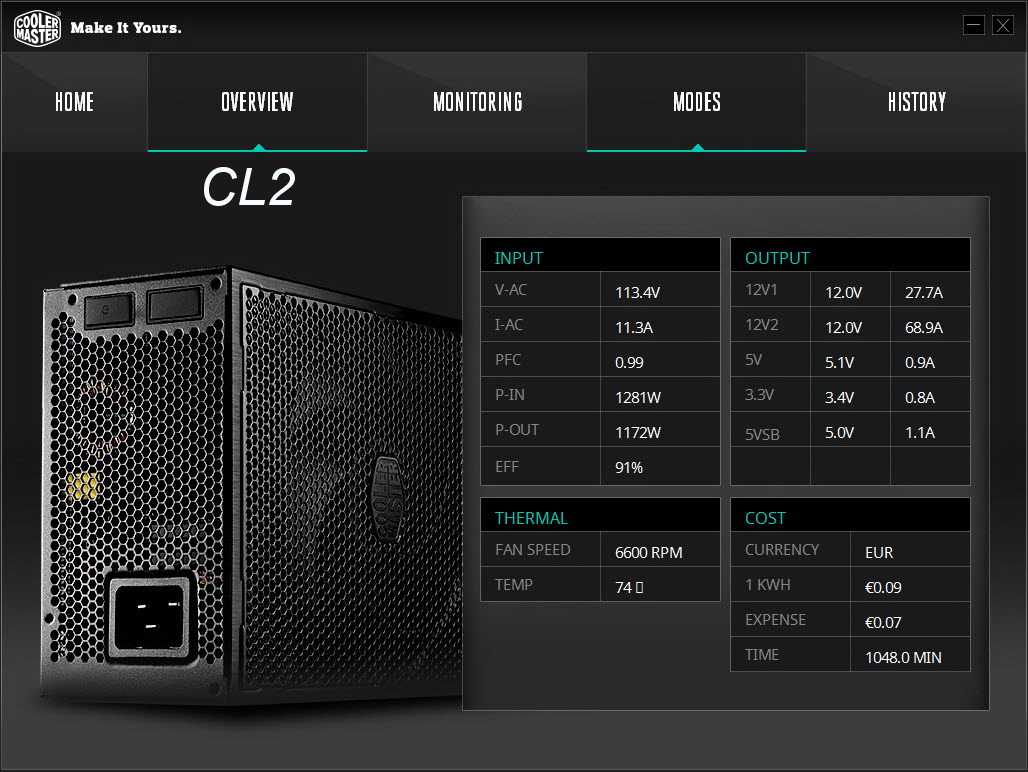
The load level readings of the rails are accurate enough. However, the voltage and efficiency readings aren't as accurate.
Although we selected the single +12V rail mode, Cooler Master's software still shows two separate +12V rails. It is natural to have higher loads at 12V2, since all ten PCIe connectors are fed from this rail. But given that we enabled the single +12V rail mode, this shouldn't be a problem. Lastly, the fan speed readings are wrong at 80% load level and above. All in all, Connect needs a lot of work before it's equivalent to the functionality and accuracy of Corsair's Link suite.
Current page: Load Regulation, Hold-Up Time And Inrush Current And Protections
Prev Page A Look Inside And Component Analysis Next Page Efficiency, Temperature, And Noise
Aris Mpitziopoulos is a contributing editor at Tom's Hardware, covering PSUs.
-
Onus Shades of the GX line; Coolermaster swings for the fences, but a competitor (pick one) in the outfield snags it and throws this one out trying to stretch a single to second base.Reply -
MasterMace CM doesn't get to put a $450 price tag on something that isn't in the same park. That voltage regulation is disappointing.Reply -
turkey3_scratch A lot of hype and little delivery for that price tag of course. Lower that price down to $200 and then we may be talking. The efficiency under low loads was quite poor. I'd like to bash the 5VSB regulation, though that's going to be unimportant and unrealistic with the majority of consumers, having load changes on that rail. Though if you are charging multiple devices I'd rather have it at 5V than 4.75V.Reply
At least the transient response performance was really good. The PWR_OK signal, eh. Aris, do you think that transient filter is really enough? I have a feeling it would fail EMI testing, only 4 y caps, 4 x caps, and 2 cm chokes on the unit.
Overall, Cooler Master paired with the wrong OEM. -
Aris_Mp the transient filtering stage looks complete since it has more than the required X caps, however you can never know unless you actually test it. I have the equipment and knowledge but I lack the time to do it :)Reply -
turkey3_scratch What are the exact requirements? I know what the ATX spec says but you have units like the FSP Hydro G 750 that failed by a good margin with 4 y caps, 2 x caps, and 2 cm chokes. So when talking about a 1200W unit with 4 y caps, 4 x caps, and 2 cm chokes, those 2 extra x caps are enough to do the trick?Reply -
Nuckles_56 The performance per dollar chart was great, it showed how badly overpriced this unit is and that there is a lot which could be improved on for the money spent on the unitReply -
Andi lim It's seem like the solid polymer caps on front side modular PCB's not from Nichicon, I think it belongs to Unicon taiwan ( UPT series ).Reply -
jimmysmitty Reply18352433 said:CM doesn't get to put a $450 price tag on something that isn't in the same park. That voltage regulation is disappointing.
Sadly it is more than the AX1500i, lower efficiency and specs overall and a lower warranty (7 year vs 10 year).
If someone is going to spend that much on a PSU It would be better to go for the Corsair.
